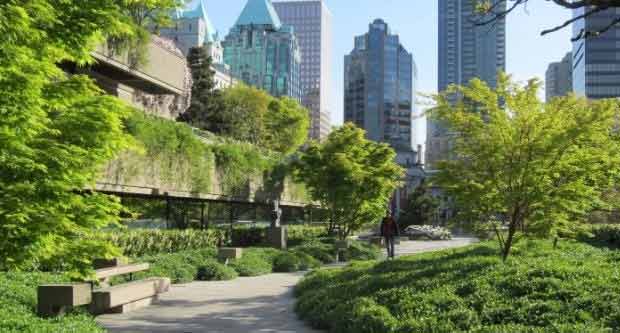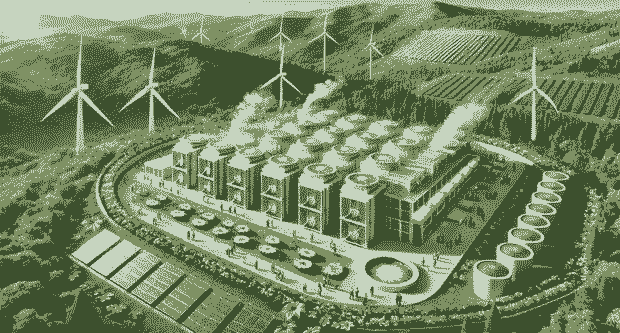Question: What is the role of urban green spaces in combating climate change?
In an era where climate change poses one of the most significant threats to global well-being, urban green spaces have emerged as crucial allies in our fight against environmental degradation. Parks, green roofs, and community gardens are more than just aesthetic enhancements to our cities—they play a pivotal role in mitigating the effects of climate change, particularly in urban areas. This article delves into how these green spaces help combat climate change by reducing urban heat islands, improving air quality, and fostering overall environmental resilience.
What Are Urban Green Spaces?
Urban green spaces refer to areas within city environments that are covered with vegetation. These include public parks, green roofs, community gardens, and urban forests. They are integral to the urban landscape, providing numerous ecological, social, and economic benefits. By integrating natural elements into the urban fabric, these spaces create a healthier, more sustainable environment for city dwellers.
Reducing Urban Heat Islands
1. The Urban Heat Island Effect
Urban heat islands (UHIs) are localized areas within cities that experience significantly higher temperatures than their rural surroundings. This phenomenon occurs due to the prevalence of heat-absorbing materials like asphalt and concrete, which absorb and retain heat from the sun. As a result, urban areas can be up to 5 to 7 degrees Fahrenheit warmer than nearby rural areas, exacerbating the impacts of heatwaves and increasing energy consumption for cooling.
2. Cooling Through Vegetation
Urban green spaces play a critical role in mitigating the urban heat island effect. Vegetation, through processes like evapotranspiration and shading, helps lower temperatures. Trees and plants release moisture into the air, which cools the surrounding environment. Additionally, the shade provided by trees and green roofs reduces the amount of heat absorbed by buildings and pavements. For example, a well-planted park can lower nearby temperatures by several degrees, making the urban environment more comfortable during hot weather.
3. Case Studies
Cities around the world are recognizing the benefits of green spaces in combating UHIs. In New York City, the MillionTreesNYC initiative aimed to plant one million trees by 2017, significantly contributing to the city’s cooling efforts. Similarly, Singapore’s “City in a Garden” approach integrates green roofs and vertical gardens throughout the city, effectively reducing local temperatures and enhancing urban biodiversity.
Improving Air Quality
1. The Challenge of Urban Air Pollution
Air quality is a major concern in urban areas, where traffic emissions, industrial activities, and construction contribute to elevated levels of pollutants such as nitrogen dioxide (NO2), sulfur dioxide (SO2), and particulate matter (PM). Poor air quality can lead to serious health problems, including respiratory and cardiovascular diseases.
2. Air Purification by Plants
Urban green spaces contribute significantly to improving air quality. Plants act as natural air filters by absorbing pollutants and releasing oxygen. Trees, in particular, are effective at removing particulate matter from the air and reducing levels of carbon dioxide (CO2). Through the process of photosynthesis, they convert CO2 into oxygen, helping to offset the greenhouse gases that contribute to climate change.
3. Practical Examples
In London, the Green Grid initiative aims to enhance the city’s green infrastructure, including urban parks and green corridors, to improve air quality. In Beijing, the installation of green roofs on buildings has been part of a broader effort to address the city’s severe air pollution problems. These green spaces not only help reduce pollutants but also contribute to a more pleasant and healthier urban environment.
Enhancing Biodiversity and Resilience
1. Biodiversity in Urban Environments
Urban green spaces are essential for promoting biodiversity within cities. They provide habitats for various plant and animal species, contributing to a more balanced and resilient ecosystem. Green spaces act as refuges for wildlife and help maintain ecological functions, such as pollination and seed dispersal.
2. Resilience to Climate Change
Green spaces enhance urban resilience to climate change by providing natural buffers against extreme weather events. For instance, well-planned parks and green roofs can manage stormwater effectively, reducing the risk of flooding during heavy rainfall. They also help mitigate the impacts of extreme heat and provide areas for recreation and relaxation, which contribute to the overall well-being of urban populations.
3. Examples of Urban Biodiversity Projects
Cities are increasingly integrating biodiversity into their green space planning. Melbourne’s “Urban Forest Strategy” focuses on expanding tree canopy cover and creating diverse green spaces to support urban wildlife. In Copenhagen, the “Cloudburst Management Plan” incorporates green roofs and permeable surfaces to manage rainwater and enhance urban biodiversity.
Community and Social Benefits
1. Social Cohesion and Well-being
Urban green spaces foster social cohesion by providing communal areas where people can gather, interact, and engage in recreational activities. Parks and community gardens serve as focal points for community events and social gatherings, strengthening the fabric of urban life. Access to green spaces has been linked to improved mental health and well-being, as they offer a respite from the stresses of city living.
2. Education and Awareness
Green spaces also play a role in environmental education and awareness. Community gardens and urban farms provide opportunities for hands-on learning about sustainable practices, food production, and ecology. Educational programs and workshops hosted in these spaces can inspire individuals to take action in their own lives to support environmental conservation.
3. Notable Examples
In Portland, Oregon, the city’s extensive network of parks and community gardens supports a strong sense of community and offers numerous educational programs. The High Line in New York City, a former elevated railway transformed into a linear park, provides both recreational space and educational opportunities about urban ecology and design.
Challenges and Considerations
1. Maintenance and Funding
One of the challenges associated with urban green spaces is ensuring their proper maintenance and funding. Parks and green roofs require regular upkeep to remain functional and attractive. Municipal budgets often face constraints, making it essential for cities to explore innovative funding mechanisms and partnerships with private organizations and community groups.
2. Equity and Access
Ensuring equitable access to urban green spaces is crucial for maximizing their benefits. Disadvantaged communities often have limited access to quality green spaces, which can exacerbate existing inequalities. Urban planning must prioritize the development of green spaces in underserved areas to ensure that all residents can enjoy their benefits.
3. Balancing Development and Green Space
As cities grow and develop, there is often pressure to convert green spaces into commercial or residential areas. Balancing urban development with the preservation and expansion of green spaces is a critical aspect of sustainable city planning. Policymakers and urban planners must work together to protect and enhance green infrastructure while accommodating growth.
The Future of Urban Green Spaces
The future of urban green spaces is promising as cities continue to recognize their importance in combating climate change and enhancing urban life. Innovations in green infrastructure, such as advanced green roof technologies and multifunctional parks, are likely to play a significant role in shaping the cities of tomorrow.
1. Technological Innovations
Advances in technology will drive the evolution of urban green spaces. Smart irrigation systems, green wall technologies, and sustainable materials will contribute to more efficient and effective green infrastructure. These innovations will help cities address climate challenges while improving the functionality and aesthetics of green spaces.
2. Integrated Urban Planning
Future urban planning will increasingly integrate green spaces into the fabric of city design. Collaborative approaches involving urban planners, architects, and community stakeholders will ensure that green spaces are incorporated into new developments and revitalization projects. This holistic approach will create more sustainable and resilient urban environments.
Conclusion
Urban green spaces are vital components in the fight against climate change. By reducing urban heat islands, improving air quality, and enhancing biodiversity, parks, green roofs, and community gardens contribute significantly to creating healthier and more sustainable cities. As we move forward, it is essential to continue investing in and expanding these green spaces to ensure that they remain effective tools in combating climate change and enhancing the quality of urban life. Through thoughtful planning and innovation, urban green spaces will play a central role in shaping resilient and vibrant cities for future generations.



